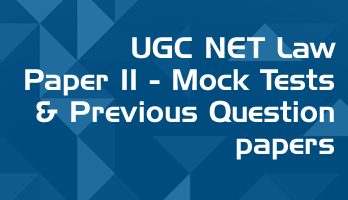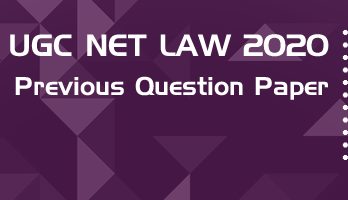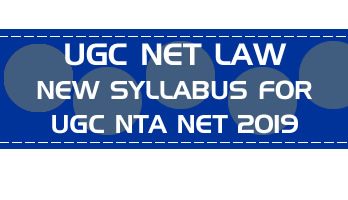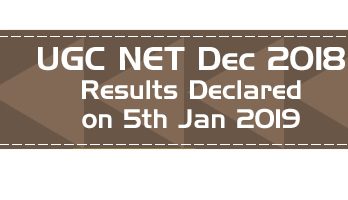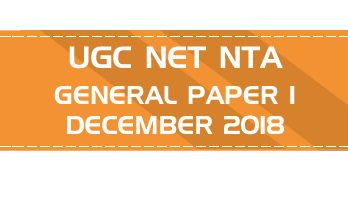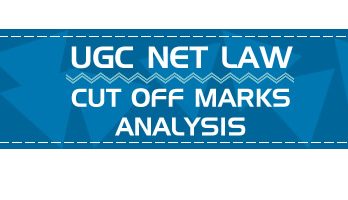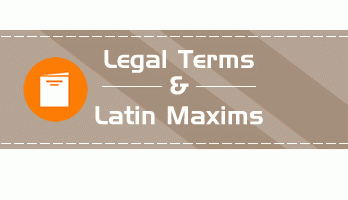- Latest Pattern Mock Tests including comprehension based questions
- Previous Question Papers with Answer Keys - From 2004 till the most recent exam
- 75 Full Length Mock Tests - New Pattern Paper II, with 100 questions each
- 50 Mini Practice Mock tests - with 25 questions each
- Unlimited Practice - New Questions in every attempt of all mocks
- Questions & Answer Choices randomly shuffled in every attempt for better practice
- Database of over 11000+ MCQs covering the entire syllabus
- Unlimited access and practice for one year from the date of purchase
- Accessible 24 x 7 via Smart-Phone browsers and Desktops
Authentic Feedback from previous LawMint users :
I got AIR 21 in CLAT PG. Thank you so much. Your mocks helped me a lot in my preparation 🙂 - Ayushi Jain
I have subscribed to your CLAT PG program and got AIR 36 in this year CLAT PG. I have also secured AIR 54 in AILET PG exam. I would like to thank you. Your mock paper really helps a lot - Shrashank Tripathi
I would like to thank you for the CLAT PG LLM COURSE. Practising mock tests there helped me in getting confidence and hence I was able to get AIR 45 in CLAT PG LLM - Akshay Awasthi
A year back, I relied on the IIT Kharagpur RGSOIPL mock test series by LawMint to prepare for my RGSOIPL entrance test. Few months back, I relied on your UGC NET Law series to prepare for UGC NET. I was the topper of the RGSOIPL entrance, and have cracked JRF in UGC NET. All thanks to LawMint - Anshuman Sahoo
"I got AIR 18 in CLAT PG and General Category rank 28 in AILET PG. I want to thank you for helping me practice well in controlled conditions from any place. It gave me a lot of confidence and I took the tests while travelling too. I also made it to IIT Kharagpur." - Vinodharani
"Lawmint has been of great help to me in securing AIR 25 in AILET PG and AIR 29 in CLAT PG examinations. The subjective and objective approach of the test series kept me up to date with the latest exam pattern." - Bhawna Nanda
"I, Nimmy Saira Zachariah joined you clat test series. I cleared AILET PG with 30th rank. Your test series were of immense help as it gave me clear idea of where my preparations stand thank you once again law mint." - Nimmy S Z
"Hey guys. Where do I start? If I thought that getting AIR 59 in Clat PG was it, then how wrong I was. With Lawmint now I have cracked UGC NET as well." - Joyanta Chakraborty
On behalf of University Grants Commission (UGC), the National Eligibility Test (NET) 2020 is conducted by the NTA – National Testing Agency, for determining the eligibility of Indian nationals for Assistant Professor roles or Junior Research Fellowship in Indian Universities and Colleges.
UGC NET June 2020 Calendar
The official dates announced by NTA for the UGC NET Law June 2020 exam are as below.
- Start of online Applications : 16th Mar 2020
- Last date for online applications : 16th Apr 2020
- Issue of Admit Card : 15th May 2019
- UGC NET 2020 Exam Dates : 15th Jun 2020 to 20th Jun 2020
- Declaration of Result by : 20th Jul 2020
Basic Eligibility for UGC NET Law 2020 – June
The eligibility rules for UGC NET Law June 2020 are as below.
General / Unreserved / General-EWS candidates must have secured at least 55% marks (without rounding off) in Master’s Degree or equivalent examination from universities/institutions recognized by UGC.
Candidates who are pursuing their Master’s degree or equivalent course or candidates who have appeared for their qualifying Master’s degree (final year) examination and whose result is still awaited or candidates whose qualifying examinations have been delayed may also apply for this test. However, such candidates will be admitted provisionally and shall be considered eligible for award of JRF / eligibility for Assistant Professor only after they have passed their Master’s Degree or equivalent examination with at least 55% marks (50% marks in case of OBC-NCL / SC / ST/ PwD/ Transgender category candidates).
Such provisionally admitted candidates must complete their Master degree or equivalent examination within two years from the date of NET result with required percentage of marks, failing which they shall be treated as disqualified.
Age Limits for UGC NET June 2020
- JRF – Junior Research Fellowship Eligibility : Not more than 30 years as on the specific cut off date mentioned in the official announcement for the year.
- Assistant Professor : There is no upper age limit while applying for UGC NET eligibility for Assistant Professor roles.
- Age limit relaxations : There are age and qualification relaxations for various special categories / reserved categories. Refer to the detailed official prospectus for information.
UGC NET Law June 2020 Question Paper Pattern
The UGC NET Examination shall be conducted as Computer Based Test (CBT) only, conducted on NTA’s standard testing platform.
The Test will comprise of two papers, Papers I & II, both of which will have objective type Multiple Choice Questions (MCQs).
The total duration of the test (for both the papers combined) will be 3 hours (180 minutes). There will be no break between papers.
- Paper 1 – General Paper on Teaching & Research Aptitude : 50 MCQs
- Paper 2 – Law Topics & Subjects : 100 MCQs
The questions in Paper I are intended to assess the teaching / research aptitude of the candidate. It will primarily be designed to test reasoning ability, reading comprehension, divergent thinking and general awareness of the candidate.
The questions in paper II are based on Law Subjects / Topics and will assess domain knowledge.
- Each MCQ in both Papers I & II will carry 1 Mark
- All the questions are compulsory
- There is no negative marking in the the UGC NET exam
Assessment and Declaration of UGC NET Results Explained
Candidates aspiring for both JRF + Assistant Professor or for Assistant Professor only, take the same exam. If you are 30 years or less – you will qualify for JRF + Asst. Prof; if you are 31 years or older as on the specified date, you will be eligible for Asst. Prof qualification only.
There are age and qualification relaxations for various special categories / reserved categories.
The methodology that is currently used by UGC for declaring NET qualification is as below :
Step 1 – Basic Cut off Percentage
The basic eligibility to be considered for UGC NET Law June 2020 qualification is :
General candidates should score at least 40% aggregate marks in both the papers taken together. OBC (Non-creamy layer) PWD/ SC/ ST candidates should score at least 35% aggregate marks in both the papers taken together.
All candidates who score less than the ‘eligibility’ marks are eliminated and they will not be eligibility for award of the eligibility under Assistant Professor or JRF categories.
Step 2 – Top 6 Percent per subject, per category
Next, the top 6% of the eligible candidates in the UGC NET Law subject (each category in the subject – Gen / OBC / SC / ST / PWD) are declared as UGC NET qualified for that exam.
Marks don’t matter, as long as you cross the basic eligibility limit and you are in the top 6% of eligible candidates in the specific subject
While there will be a trend in terms of the theoretical ‘cut-off’ marks, there are no actual cut-off marks for the UGC NET. The ‘cut-off’ marks as such keep changing every year depending on the complexity of the paper and the variations in the candidates who appear.
For example, if the paper is relatively complex, it will be so for all the candidates – so the overall scores will go down. The cut-off marks will also change between subject to subject.
To summarize, the get a UGC NET Law June 2020 eligibility certificate, candidates will have to score more than the cut-off and be among the top 6% taking the exam.
Online Application & Information portals
The official website for application, downloading the admit card, important information and final results is : https://ugcnet.nta.nic.in
The official NTA website is : https://nta.ac.in/
Official Detailed Syllabus for UGC NET Law June 2020
The Subject code for UGC NET Law is 58 (Fifty Eight)
UNIT – I: JURISPRUDENCE
1. Nature and sources of law
2. Schools of jurisprudence
3. Law and morality
4. Concept of rights and duties
5. Legal personality
6. Concepts of property, ownership and possession
7. Concept of liability
8. Law, poverty and development
9. Global justice
10. Modernism and post-modernism
UNIT – II: CONSTITUTIONAL AND ADMINISTRATIVE LAW
1. Preamble, fundamental rights and duties, directive principles of state policy.
2. Union and State executive and their interrelationship
3. Union and State legislature and distribution of legislative powers
4. Judiciary
5. Emergency provisions
6. Temporary, transitional and special provisions in respect of certain states
7. Election Commission of India
8. Nature, scope and importance of administrative law
9. Principle of natural justice
10. Judicial review of administrative actions – Grounds.
UNIT – III: PUBLIC INTERNATIONAL LAW AND INTERNATIONAL HUMANITARIAN LAW
1. International law – Definition, nature and basis
2. Sources of International law
3. Recognition of states and governments
4. Nationality, immigrants, refugees and internally displaced persons (IDPs)
5. Extradition and asylum
6. United Nations and its organs
7. Settlement of international disputes
8. World Trade Organization (WTO)
9. International humanitarian law (IHL) – Conventions and protocols
10. Implementation of IHL – Challenges
UNIT – IV: LAW OF CRIMES
1. General principles of criminal liability – Actus reus and mens rea, individual and group liability and constructive liability
2. Stages of crime and inchoate crimes – Abetment, criminal conspiracy and attempt
3. General exceptions
4. Offences against human body
5. Offences against state and terrorism
6. Offences against property
7. Offences against women and children
8. Drug trafficking and counterfeiting
9. Offences against public tranquility
10. Theories and kinds of punishments, compensation to the victims of crime
UNIT – V: LAW OF TORTS AND CONSUMER PROTECTION
1. Nature and definition of tort
2. General principles of tortious liability
3. General defenses
4. Specific torts – Negligence, nuisance, trespass and defamation
5. Remoteness of damages
6. Strict and absolute liability
7. Tortious liability of the State
8. The Consumer Protection Act 1986 – Definitions, consumer rights and redressal mechanism
9. The Motor Vehicles Act, 1988 – No fault liability, third party insurance and claims tribunal
10. The Competition Act, 2002 – Prohibition of certain agreements, abuse of dominant position and regulation of combinations
UNIT – VI: COMMERCIAL LAW
1. Essential elements of contract and e-contract
2. Breach of contract, frustration of contract, void and voidable agreements
3. Standard form of contract and quasi-contract
4. Specific contracts – Bailment, pledge, indemnity, guarantee and agency
5. Sale of Goods Act, 1930
6. Partnership and limited liability partnership
7. Negotiable Instruments Act, 1881
8. Company law – Incorporation of a company, prospectus, shares and debentures
9. Company law – Directors and meetings
10. Corporate social responsibility
UNIT – VII: FAMILY LAW
1. Sources and schools
2. Marriage and dissolution of marriage
3. Matrimonial remedies – Divorce and theories of divorce
4. Changing dimensions of institution of marriage – Live-in relationship
5. Recognition of foreign decrees in India on marriage and divorce
6. Maintenance, dower and stridhan
7. Adoption, guardianship and acknowledgement
8. Succession and inheritance
9. Will, gift and wakf
10. Uniform Civil Code
UNIT – VIII: ENVIRONMENT AND HUMAN RIGHTS LAW
1. Meaning and concept of ‘environment’ and ‘environmental pollution’
2. International environmental law and UN Conferences
3. Constitutional and legal framework for protection of environment in India
4. Environmental Impact Assessment and control of hazardous waste in India
5. National Green Tribunal
6. Concept and development of human rights
7. Universalism and cultural relativism
8. International Bill of Rights
9. Group rights – Women, children, persons with disabilities, elderly persons, minorities and weaker sections
10. Protection and enforcement of human rights in India – National Human Rights Commission, National Commission for Minorities, National Commission for Women, National Commission for Scheduled Castes, National Commission for Schedule Tribes and National Commission for Backward Classes
UNIT – IX: INTELLECTUAL PROPERTY RIGHTS AND INFORMATION TECHNOLOGY LAW
1. Concept and meaning of intellectual property
2. Theories of intellectual property
3. International conventions pertaining to intellectual properties
4. Copyright and neighboring rights – Subject matters, limitations and exceptions, infringement and remedies
5. Law of patent – Patentability, procedure for grant of patent, limitations and exceptions, infringement and remedies
6. Law of trademark – Registration of trademarks, kinds of trademarks, infringement and passing off, remedies
7. Protection of Geographical Indications
8. Bio-diversity and Traditional Knowledge
9. Information technology law- digital signature and electronic signature, electronic governance, electronic records and duties of subscribers
10. Cyber crimes, penalties and adjudication
UNIT – X: COMPARATIVE PUBLIC LAW AND SYSTEMS OF GOVERNANCE
1. Comparative Law – Relevance, methodology, problems and concerns in Comparison
2. Forms of governments – Presidential and parliamentary, unitary and federal
3. Models of federalism – USA, Canada and India
4. Rule of Law – ‘Formal’ and ‘substantive’ versions
5. Separation of powers – India, UK, USA and France
6. Independence of judiciary, judicial activism and accountability – India, UK and USA
7. Systems of constitutional review – India, USA, Switzerland and France
8. Amendment of the Constitution – India, USA and South Africa
9. Ombudsman –Sweden, UK and India
10. Open Government and Right to Information – USA, UK and India
The syllabus for UGC NET Law is predominantly based on the standard LLB syllabus + there are additional areas that are covered in common across LLM courses.
UGC NET Law Cut off from recent exam
Note : ‘Percentage’ in the exam and ‘Percentile’ among the candidates are two different parameters. A candidate may score 64% in the exam; and if she/he is among the top 99% of the candidates, she/he will be ranked at 99 percentile.
The absolute percentage change year-on-year depending on the complexity of the paper, the average preparation level of the candidates and other parameters.
JRF & Asst Professor | Asst Professor Only | |||
| Category | Cutoff Marks Percentage | Total Candidates | Cutoff Marks Percentage | Total Candidates |
| UNRESERVED | 64.67 | 44 | 57.33 | 633 |
| EWS | 61.33 | 11 | 52 | 170 |
| OBC(NCL) | 61.33 | 21 | 52 | 291 |
| SC | 57.33 | 11 | 49.33 | 185 |
| ST | 56 | 4 | 48 | 58 |
| PWD-VI-UR | 50.67 | 1 | 47.33 | 4 |
| PWD-HI-UR | 51.33 | 1 | 42.67 | 2 |
| PWD-LM-UR | 59.33 | 2 | 46 | 15 |
| PWD-OD&AO-UR | 49.33 | 1 | 44.67 | 4 |
| PWD-VI-OB | 50 | 1 | 48.67 | 1 |
| PWD-HI-OB | 40 | 1 | 37.33 | 2 |
| PWD-LM-OB | 57.33 | 1 | 44 | 9 |
| PWD-VI-SC | 36 | 1 | 36 | 1 |
| PWD-LM-SC | 48 | 1 | 42.67 | 6 |
| PWD-VI-ST | 43.33 | 1 | 43.33 | 1 |
| PWD-LM-ST | — | — | 44.67 | 1 |
| PWD-OD&AO-ST | — | — | 36 | 2 |
| PWD-VI-EW | 44.67 | 1 | 44.67 | 2 |
| PWD-LM-EW | — | — | 46 | 1 |
- Latest Pattern Mock Tests including comprehension based questions
- Previous Question Papers with Answer Keys - From 2004 till the most recent exam
- 75 Full Length Mock Tests - New Pattern Paper II, with 100 questions each
- 50 Mini Practice Mock tests - with 25 questions each
- Unlimited Practice - New Questions in every attempt of all mocks
- Questions & Answer Choices randomly shuffled in every attempt for better practice
- Database of over 11000+ MCQs covering the entire syllabus
- Unlimited access and practice for one year from the date of purchase
- Accessible 24 x 7 via Smart-Phone browsers and Desktops
Authentic Feedback from previous LawMint users :
I got AIR 21 in CLAT PG. Thank you so much. Your mocks helped me a lot in my preparation 🙂 - Ayushi Jain
I have subscribed to your CLAT PG program and got AIR 36 in this year CLAT PG. I have also secured AIR 54 in AILET PG exam. I would like to thank you. Your mock paper really helps a lot - Shrashank Tripathi
I would like to thank you for the CLAT PG LLM COURSE. Practising mock tests there helped me in getting confidence and hence I was able to get AIR 45 in CLAT PG LLM - Akshay Awasthi
A year back, I relied on the IIT Kharagpur RGSOIPL mock test series by LawMint to prepare for my RGSOIPL entrance test. Few months back, I relied on your UGC NET Law series to prepare for UGC NET. I was the topper of the RGSOIPL entrance, and have cracked JRF in UGC NET. All thanks to LawMint - Anshuman Sahoo
"I got AIR 18 in CLAT PG and General Category rank 28 in AILET PG. I want to thank you for helping me practice well in controlled conditions from any place. It gave me a lot of confidence and I took the tests while travelling too. I also made it to IIT Kharagpur." - Vinodharani
"Lawmint has been of great help to me in securing AIR 25 in AILET PG and AIR 29 in CLAT PG examinations. The subjective and objective approach of the test series kept me up to date with the latest exam pattern." - Bhawna Nanda
"I, Nimmy Saira Zachariah joined you clat test series. I cleared AILET PG with 30th rank. Your test series were of immense help as it gave me clear idea of where my preparations stand thank you once again law mint." - Nimmy S Z
"Hey guys. Where do I start? If I thought that getting AIR 59 in Clat PG was it, then how wrong I was. With Lawmint now I have cracked UGC NET as well." - Joyanta Chakraborty


